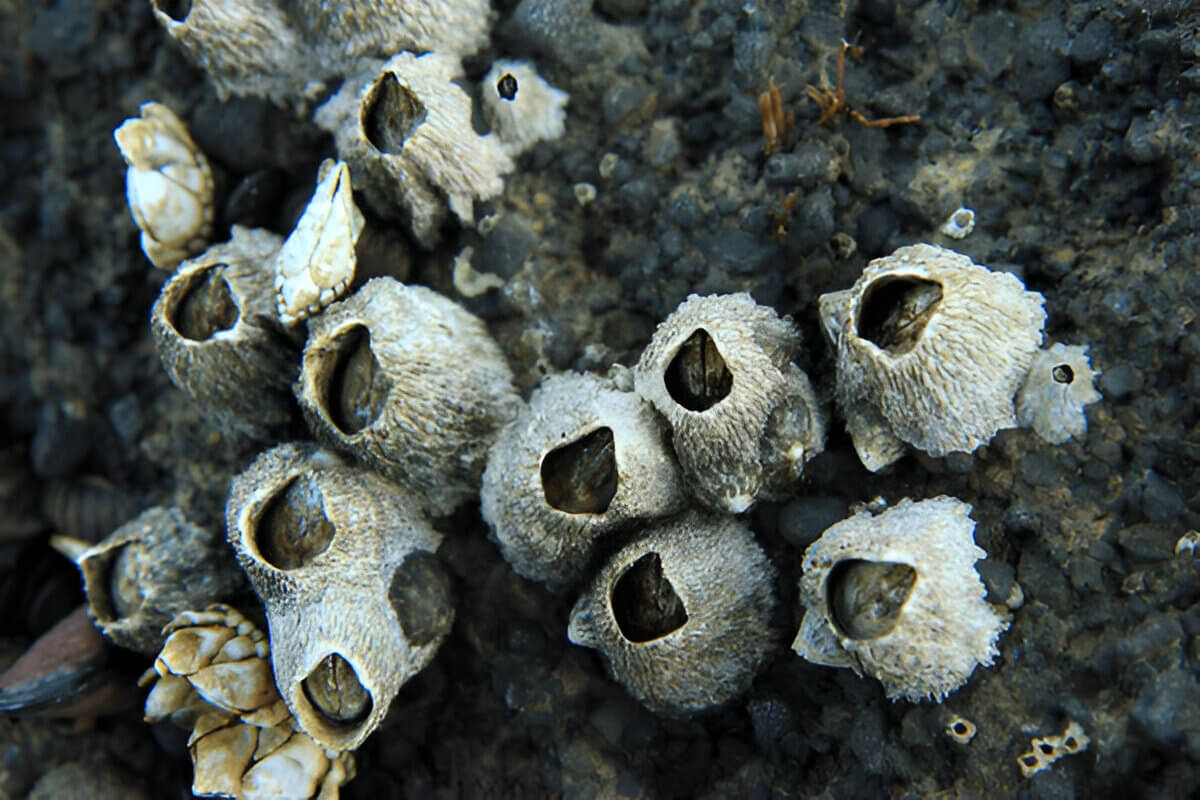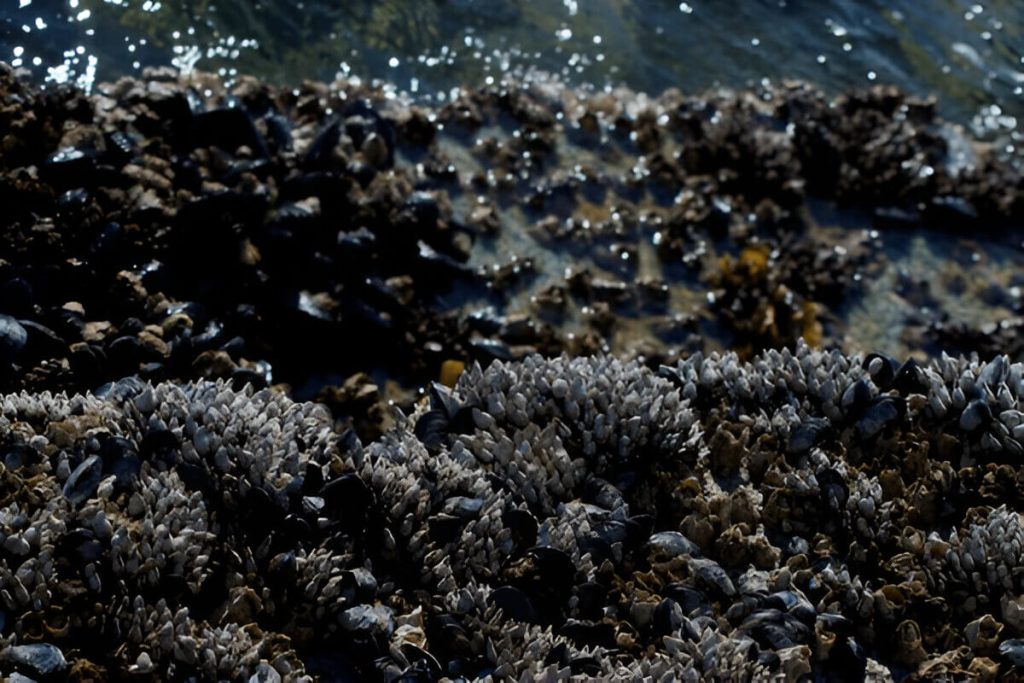
Barnacles, though small, play a significant role in the ocean ecosystem. Their unique anatomy and life cycle impact marine vessels and human activities. From symbiotic relationships to encrustation challenges on ships, barnacles offer a rich subject for exploration. This article explores their biology, ecological importance, interesting species facts, and highlights economic and cultural impacts across regions. Join us to understand these fascinating organisms better.
The Biology of Barnacles (Anatomy and Life Cycle)
Barnacles, often seen clinging to rocks and ship hulls, are fascinating marine crustaceans with unique anatomical and reproductive characteristics. Understanding barnacle anatomy begins with their hard calcareous shell, which serves as a protective shield against predators and environmental hazards. Beneath this shell lies the barnacle’s body, featuring feathery appendages called cirri that extend outward to filter plankton from the water for nourishment.
The life cycle of a barnacle is equally intriguing. It begins with the release of larvae into the ocean, where they drift as plankton until they find a suitable surface to attach themselves permanently. This attachment marks their metamorphosis into adulthood. As adults, barnacles are sessile creatures that reproduce by cross-fertilization, a necessity given their immobile nature. They possess long, extendable reproductive organs that allow them to reach neighboring individuals for mating.
Barnacles share many crustacean characteristics such as segmented bodies and jointed limbs but stand out due to their sedentary lifestyle and specialized adaptations for survival in intertidal zones. By understanding these unique biological aspects, we gain insight into how barnacles thrive in diverse marine environments across the globe.
The Role of Barnacles in Marine Ecosystems

Barnacles play a crucial role in maintaining the balance and health of marine ecosystems. These small, shelled crustaceans are often overlooked, yet their presence is vital for various ecological processes. One of the key contributions of barnacles is their role in marine biodiversity. By attaching themselves to hard surfaces like rocks, ship hulls, and even other marine organisms, barnacles create complex habitats that provide shelter and breeding grounds for numerous species, thus enhancing biodiversity.
The ecosystem role of barnacles extends beyond habitat formation. They engage in symbiotic relationships with other marine life forms. For instance, some fish species feed on the plankton that barnacles attract or dislodge while filtering water for food. This interaction not only supports the diet of these fish but also helps maintain a balanced food web within the ecosystem.
Barnacles are filter feeders; they consume plankton and detritus by extending their feathery appendages into the water column to capture food particles. This feeding habit contributes significantly to nutrient cycling within marine environments. By filtering large volumes of seawater daily, barnacles help maintain water quality and clarity, which benefits other photosynthetic organisms like algae and seagrasses.
While often underestimated due to their small size and stationary nature, barnacles play an indispensable part in promoting marine biodiversity through habitat creation and nutrient cycling. Their symbiotic relationships further illustrate their integral role within complex oceanic systems, highlighting how even the smallest creatures can have profound impacts on environmental health and stability.
Barnacle Encrustation (Impact on Human Activities and Marine Vessels)
Barnacle encrustation presents significant challenges to human activities, particularly in the realm of marine vessels. As fouling organisms, barnacles attach themselves to the hulls of ships and other submerged structures, creating a host of problems that require diligent management. One of the primary issues associated with barnacle encrustation is its impact on ship maintenance. The presence of these organisms increases drag on vessels, leading to higher fuel consumption and reduced speed. This not only affects operational efficiency but also contributes to increased greenhouse gas emissions.
The process of removing barnacles can be both time-consuming and costly, as it often involves dry-docking the vessel for thorough cleaning and application of antifouling coatings designed to prevent future infestations. These maintenance challenges underscore the importance of developing effective strategies for managing fouling organisms’ impact on marine vessels.
Additionally, barnacle encrustation can affect underwater equipment such as sensors and pipelines, leading to potential disruptions in data collection or flow efficiency. Therefore, understanding and mitigating the effects of barnacle encrustation is essential for maintaining optimal performance across various maritime activities. By investing in innovative solutions and regular maintenance practices, industries can minimize these impacts while ensuring sustainable operations at sea.
Interesting Facts About Different Types of Barnacles
Barnacles, those intriguing crustaceans often found clinging to rocks and ships, are fascinating creatures with a diverse range of species. Among the various types of barnacle species, the goose barnacle stands out with its unique appearance and interesting history. Named for their long, stalk-like necks that resemble the necks of geese, goose barnacles were once thought to be the eggs or young of barnacle geese in medieval Europe, an amusing misconception that has since been debunked.
These intertidal zone creatures have adapted remarkably well to their environments. Barnacles are known for their ability to withstand harsh conditions such as crashing waves and fluctuating tides. They achieve this by secreting a strong adhesive substance that allows them to attach firmly to surfaces like rocks, hulls of ships, and even other marine animals.
Another fascinating aspect of barnacles is their feeding mechanism. As filter feeders, they extend feathery appendages called cirri into the water column to capture plankton and detritus. This method not only sustains them but also contributes significantly to the ocean’s nutrient cycles.
In terms of diversity, there are over 1,000 types of barnacle species spread across different marine habitats worldwide. While many people might overlook these small creatures due to their unassuming presence in coastal areas, understanding more about their lifestyles and ecological roles reveals just how interesting these intertidal zone dwellers truly are.
The Economic and Cultural Significance of Barnacles in Various Regions
Barnacles, often seen as simple marine organisms clinging to rocks and ship hulls, have a surprising economic and cultural significance in various regions around the world. Economically, barnacles play a crucial role in certain industries. In some coastal communities, they are harvested for their culinary value. Known for their unique taste and texture, barnacles are considered a delicacy in countries like Spain and Portugal. Their presence on menus highlights their contribution to local economies through gastronomy.
Beyond cuisine, barnacles have industrial applications as well. The study of their strong adhesive properties has inspired innovations in developing new bioadhesives for medical and engineering purposes. This research underscores the potential of barnacles to influence technological advancements.
Culturally, barnacles hold diverse symbolic meanings across different societies. In some cultures, they are associated with tenacity and resilience due to their ability to withstand harsh marine environments. Additionally, certain folklore attributes mystical qualities to barnacles, viewing them as omens or symbols of good luck.
Thus, while often overlooked or dismissed as mere nuisances by those unfamiliar with their broader impact, barnacles offer valuable insights into both economic opportunities and cultural narratives across the globe. Their multifaceted roles continue to spark interest among researchers and enthusiasts alike who seek to understand the intricate connections between nature and human society.
Appreciating the Complexity and Importance of Barnacles in Our Oceans
Barnacles, often overlooked due to their small size and seemingly mundane presence, play a crucial role in our ocean ecosystems. These fascinating crustaceans are not just passive dwellers on rocks and ships; they are vital components of the marine environment. By filtering plankton and other particles from the water, barnacles contribute to maintaining water clarity and quality, which benefits a multitude of marine species.
Moreover, barnacles serve as an important food source for various predators, including sea stars and fish. Their presence supports the intricate web of life within ocean habitats. Additionally, barnacle larvae provide insight into ocean currents as their distribution patterns can indicate changes in water movement.
Understanding the complexity of barnacle life cycles and their ecological roles underscores the importance of preserving these organisms. As we continue to explore and appreciate the diversity within our oceans, recognizing the significance of even the smallest creatures like barnacles reminds us of our responsibility to protect these delicate ecosystems for future generations.